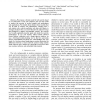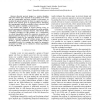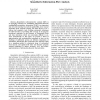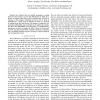CSFW
2010
IEEE
15 years 4 months ago
2010
IEEE
—We propose a formal model of web security based straction of the web platform and use this model to analyze the security of several sample web mechanisms and applications. We id...
102
Voted
CSFW
2010
IEEE
15 years 4 months ago
2010
IEEE
—This paper proposes a systematic study of information flow in credential-based declarative authorization policies. It argues that a treatment in terms of information flow is n...
115
Voted
CSFW
2010
IEEE
15 years 4 months ago
2010
IEEE
Mobile ad hoc networks consist of mobile wireless devices which autonomously organize their infrastructure. In such a network, a central issue, ensured by routing protocols, is to ...
74
Voted
CSFW
2010
IEEE
15 years 4 months ago
2010
IEEE
109
click to vote
CSFW
2010
IEEE
15 years 4 months ago
2010
IEEE
—Security protocol design is a creative discipline where the solution space depends on the problem to be solved and the cryptographic operators available. In this paper, we exami...
CSFW
2010
IEEE
15 years 4 months ago
2010
IEEE
—Quantitative information-flow analysis (QIF) is an emerging technique for establishing information-theoretic confidentiality properties. Automation of QIF is an important step...
CSFW
2010
IEEE
15 years 4 months ago
2010
IEEE
Abstract—Layout randomization is a powerful, popular technique for software protection. We present it and study it in programming-language terms. More specifically, we consider ...
CSFW
2010
IEEE
15 years 4 months ago
2010
IEEE
—Anonymous communication protocols must achieve two seemingly contradictory goals: privacy (informally, they must guarantee the anonymity of the parties that send/receive informa...
91
Voted
CSFW
2010
IEEE
15 years 4 months ago
2010
IEEE
—An attacker that can identify messages as coming from the same source, can use this information to build up a picture of targets’ behaviour, and so, threaten their privacy. In...
CSFW
2010
IEEE
15 years 4 months ago
2010
IEEE
—This paper seeks to answer fundamental questions about trade-offs between static and dynamic security analysis. It has been previously shown that flow-sensitive static informat...




